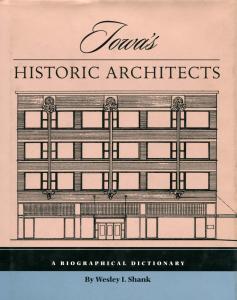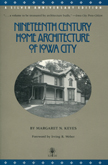Iowa's Historic Architects
“Wes Shank's dictionary of Iowa architects is like a bottle of great wine: it only gets better each year. Shank was alert to the need to preserve information about the architects themselves, their personal and professional lives, as well as their buildings. I predict that it will soon be the custom of anyone writing about the state's great historical buildings to begin research with a visit to Iowa's Historic Architects.”—Tom Morain, administrator, State Historical Society of Iowa
“Shank has performed a wonderful service for scholars of Iowa architecture by compiling this remarkable work—a convenient source of information about architects who have practiced in the state throughout its history. A work like this is long overdue and is exactly what many researchers have awaited for years; it is especially valuable in that it brings together information heretofore difficult to find and almost inaccessible in widely scattered, often obscure sources. The extensive bibliography clearly reflects the enormous amount of time and energy spent by Shank in compiling this book. The biographical entries are written in a highly readable style. This book will undoubtedly be welcomed and used by many historians now and in the future.”—Alan K. Lathrop, professor and curator, Northwest Architectural Archives, University of Minnesota
Who were Iowa's historic architects? In this extensively researched dictionary, Wesley Shank answers that question by providing biographies of more than two hundred architects who practiced in Iowa before 1950 and who maintained an office in the state for at least part of their careers.
Among the prominent Iowa architects of the late nineteenth and early twentieth centuries were a remarkable few who had little training in architecture; their natural talents and their capacity for hard work made up for their lack of experience. Beginning in 1927, however, an Iowa architect had to meet state requirements of experience and training in order to practice. Shank includes an introduction to the history of the profession in Iowa: the development of professional education and training, the founding of professional societies and their roles, the different personalities and talents of the architects, the demography of architectural offices in the state, and the relative importance of Iowa architects both statewide and nationally.
For each architect Shank has gathered as much personal and professional information as possible: dates and places of birth and death; parents, spouses, and children; education and professional training; personality and competency; when and where they practiced, with whom, and when their partnerships began and ended; what roles they played in their communities and their profession; and the representative buildings they designed.
As a reflection of both national and state history, Iowa's Historic Architects will be valuable to professionals in the fields of architecture, American history, and historic preservation as well as to general readers.






